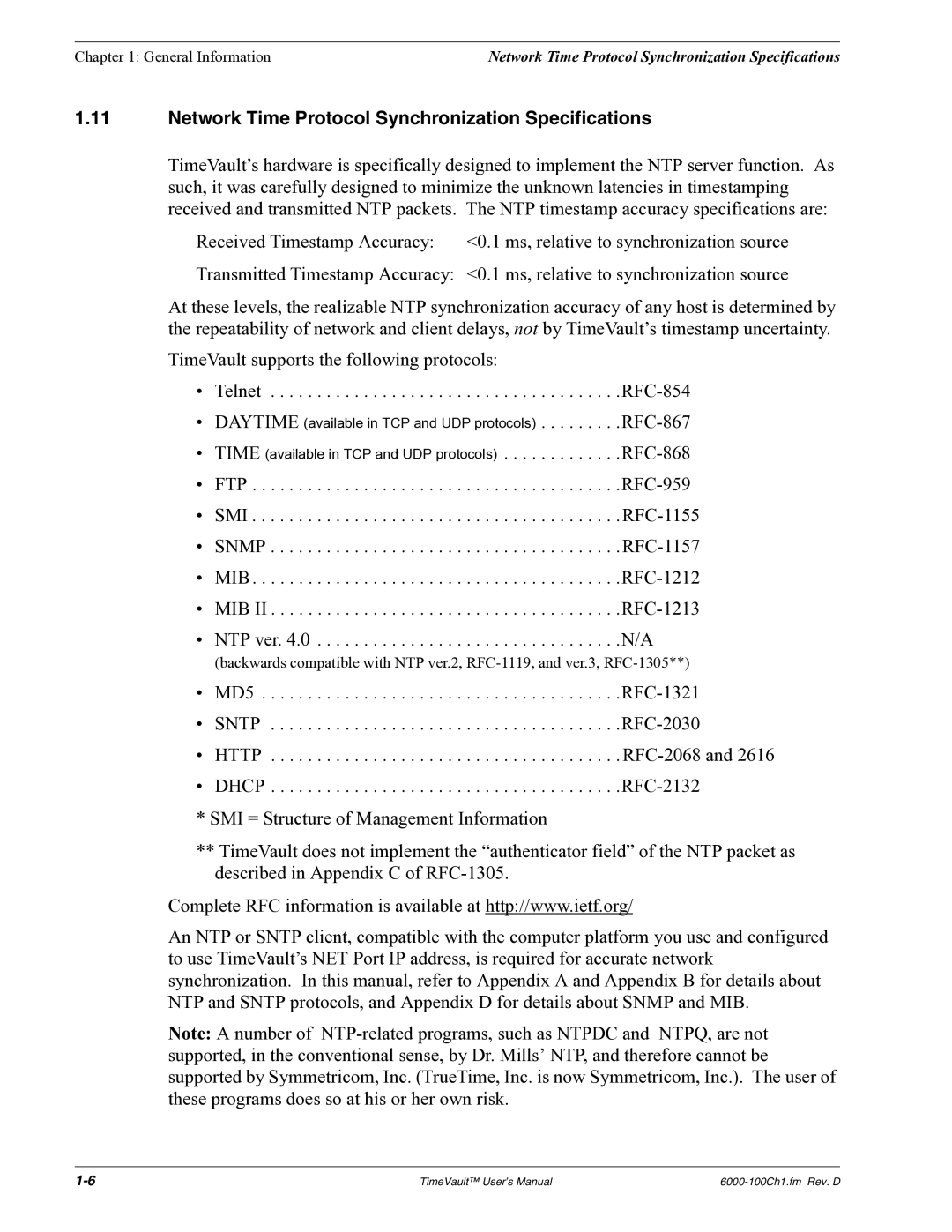
Chapter 1: General Information | Network Time Protocol Synchronization Specifications |
1.11Network Time Protocol Synchronization Specifications
TimeVault’s hardware is specifically designed to implement the NTP server function. As such, it was carefully designed to minimize the unknown latencies in timestamping received and transmitted NTP packets. The NTP timestamp accuracy specifications are:
Received Timestamp Accuracy: <0.1 ms, relative to synchronization source
Transmitted Timestamp Accuracy: <0.1 ms, relative to synchronization source
At these levels, the realizable NTP synchronization accuracy of any host is determined by the repeatability of network and client delays, not by TimeVault’s timestamp uncertainty.
TimeVault supports the following protocols: |
| |
• | Telnet | |
• | DAYTIME (available in TCP and UDP protocols) | |
• | TIME (available in TCP and UDP protocols) | |
• | FTP | |
• | SMI | |
• | SNMP | |
• | MIB | |
• | MIB II | |
• | NTP ver. 4.0 | N/A |
| (backwards compatible with NTP ver.2, | |
• | MD5 | |
• | SNTP | |
• | HTTP | |
• | DHCP | |
*SMI = Structure of Management Information
**TimeVault does not implement the “authenticator field” of the NTP packet as described in Appendix C of
Complete RFC information is available at http://www.ietf.org/
An NTP or SNTP client, compatible with the computer platform you use and configured to use TimeVault’s NET Port IP address, is required for accurate network synchronization. In this manual, refer to Appendix A and Appendix B for details about NTP and SNTP protocols, and Appendix D for details about SNMP and MIB.
Note: A number of
TimeVault™ User’s Manual |
